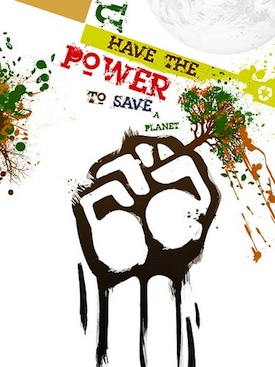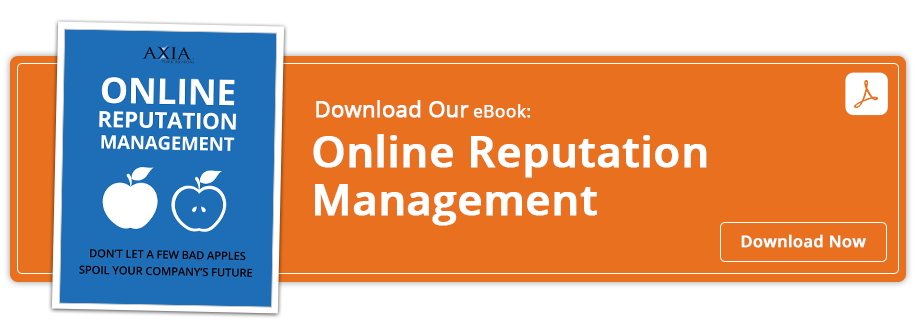Earth Day matters, part 2 of 2: 4 ways to tie your brand to environmental sustainability and good corporate citizenship
By Michelle HeatherlyApril 22, 2014
Plus: Ways you can help now through 6 green priorities

As discussed in Part 1, Earth Day is a day to show our support for environmental protection, and the new way of doing this is through sustainable innovation (reimagining and redesigning), which has surpassed traditional green priorities (reducing, reusing, recycling). Though probably too late to implement in time for the occasion for this year, below are four ways you can begin exploring for the future to tie you and your brand to corporate social responsibility (CSR) and sustainability, including examples of how you can help individually and company-wide, both small- and large-scale, through the most common green priorities and new innovations.
Compliments of Magdalene Sim, Director of Communications for Great Forest Inc., here is a summary of Earth Day ideas:
1. Events
Earth Day fairs, attention-getting displays made out of recyclables or upcycled materials, introducing more environmentally friendly options (like bike racks, electric company cars, hand dryers, dual flush toilets), environmental talks and lectures from community and green industry leaders are all great ways to make the most of Earth Day at your small or large corporation. Earth Day is a great occasion to roll out a sustainability or CSR program. If the event is deemed newsworthy, notify area or industry media (your public relations department or firm will be able to help you make this determination).
2. Awards and recognition
Inter-office competitions can be great motivators. How about a recycling competition? Set or break a world record for shredding or other environmentally friendly goals. Tout the amount of resources you’ve saved (sheets of paper, gallons of water, etc.) by implementing your green initiatives. Thank supporters of your company’s green efforts. Are there any local awards recognizing green companies in your industry or area? A good PR partner can help you identify and apply for these (awards are a great way to boost your credibility).
3. Community involvement and volunteerism
Worldwide movements like Billion Acts of Green and Earth Hour give companies an easy way to involve their staff. Some companies will even match an employee’s green pledge with a green act such as planting a tree. Volunteer opportunities and giving back to the community are also great ways to participate and have an impact through programs such as Adopt-a-Block. Donating old and gently used clothing or bedding items (think hotels) or office furniture and supplies to area homeless shelters, non-profit organizations and companies like Goodwill and Salvation Army is another way to reuse materials, reduce waste and have a positive impact on your local community. Since Take Our Sons and Daughters to Work Day is this week, too (April 24), companies can also invite children of staff to submit Earth Day artwork for display in the office.
4. Green programs, initiatives and projects
Many companies use the publicity surrounding Earth Day to launch new green programs in their offices. It can be small or large – as simple as instituting a double-sided printing policy or as ambitious as launching a company-wide effort to replace all lighting with LED bulbs. Many companies form “green teams” to identify opportunities and take charge of green initiatives. Microsoft had a “sustainability captains” team of volunteers, while others have task forces for a cleaner, greener tomorrow. Green teams often end up driving the company’s sustainability strategy because their ideas and partnerships, initiated by employees, can often result in greater participation.
Here are some examples of ways you can help through traditional green priorities and new sustainable innovations:
Reduce
-
Implement a double-sized print policy, include tag lines on emails encouraging people not to print out messages unnecessarily or recommend typefacing to use, like Garamond, for conserving ink.
-
Use websites like SlideShare to upload/share PowerPoint presentations instead of printing hard copies.
-
Instead of offering plastic water bottles, make filtered water available.
-
Install water-saving devices such as dual flushing toilets, which reduce environmental impact, offer cost savings and have low upkeep.
-
Install hand dryers to reduce the use of paper towels.
-
Walk or bike to work if you live close enough to your office; carpool if co-workers live nearby; use public transportation when possible.
-
Turn lights off when leaving a room or when a space is not in use.
-
Set thermostats to conserve energy during days/hours when no one is around.
-
Encourage customers and suppliers to accept invoices by email and payments online.
-
Send out digital marketing materials (PDF brochures, infographs, newsletters, etc.) instead of printed ones.
Reuse
-
Use reusable dishware, mugs and glasses instead of disposable plastic cups, plastic utensils or paper plates.
-
Use dry-erase or chalkboards for collaborative meetings instead of easels with sheets of paper.
-
Donate extra items to other organizations. (For example, PR firms have a lot of magazine subscriptions. Once the month is over, donate the magazines to area doctors’ offices, dentist offices, non-profit organizations, art classes or homeless shelters.)
Recycle
-
Provide recycling bins in offices to encourage employees to be more waste-conscious.
-
Use recycled materials around your office, like recycled vinyl flooring or paper towels made of recycled paper (only if you must – cloth or hand dryers are preferred).
-
Use scrap paper for taking notes and messages.
-
Properly dispose of waste water, chemicals and other materials.
-
Here are some recycling best practices from Axia friend Northstar Recycling on larger ways companies can recycle and have a broader impact.
Reimagine
-
Use cloud computing and cloud servers or online databases for documents to avoid printing (cuts down on toner and paper consumption, energy and cost and provides employees the convenience of being able to access documents when needed).
-
Rethink your traditional office space. Google, for example, has many offices around the world that reuse old subway cars, ski lifts or air balloons as office furniture. These environments help encourage additional imagination and creativity, which leads to more innovation.
Redesign
-
Build or remodel office space for reduced clutter, improved workflow and reduced use of resources (like energy-efficient windows and natural lighting to light and/or heat rooms).
-
Use laptops instead of desktop computers. They’re more energy-efficient and they increase productivity and flexibility. Working where and when you need also makes telecommuting more feasible, saving on gas consumption.
-
Switch to recycled or more eco-friendly materials or change the design of a product to use less material.
-
Let nature do the work of designing office space layout and furniture for temperature and airflow control (think about placement of windows, skylights and opportunities to install solar energy).
Regenerate
-
Create/use your own energy sources like wind turbines, water power, solar energy and high-efficiency wood-burning furnaces.
-
Save food waste materials to create compost to be used as fertilizer in property landscaping.
It’s simple: Use less, waste less, think more. Being aware of your impact both as an individual and as a business is the first step to improving sustainability and becoming a good corporate citizen. When it comes to sustainability and CSR, avoid “greenwashing,” which could have negative repercussions. Instead, pay close attention to sequence, ensuring you have your priorities in line – lead with what is good for greater mankind before you tout your own green initiatives and successes. Think outside the box – that’s where the real innovation and the real improvement are. A professional public relations firm can help you do precisely all of this to ensure you’re maximizing your results.
What is your company doing for Earth Day 2014 (and beyond) with its sustainability and CSR efforts?
For more information on the references used in this article see Inc.’s 10 Ways to Mark Earth Day at Your Company, Smallbizpros.com’s “Is your business doing its part to go green?,” “Hand Dryers Save the Environment,” by Handdryerdistributor.com and “Dual Flush Toilet Advantages” by Poole’s Plumbing.
 As director of client engagement for Axia Public Relations, Michelle Heatherly’s professional mission is to successfully integrate clients into the firm and to ensure they are personally delighted and their expectations are exceeded – every step of the way. Her personal mission is to live a life that matters and to inspire others to do the same.
As director of client engagement for Axia Public Relations, Michelle Heatherly’s professional mission is to successfully integrate clients into the firm and to ensure they are personally delighted and their expectations are exceeded – every step of the way. Her personal mission is to live a life that matters and to inspire others to do the same.
Topics: public relations, reputation management, online reputation management


Comment on This Article